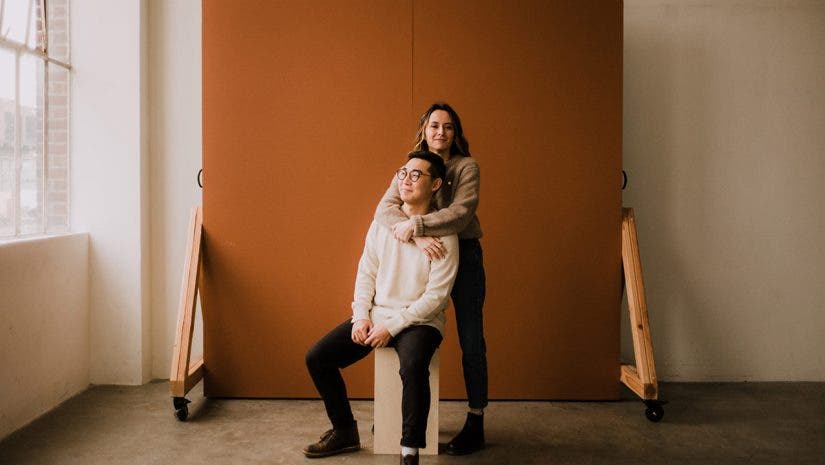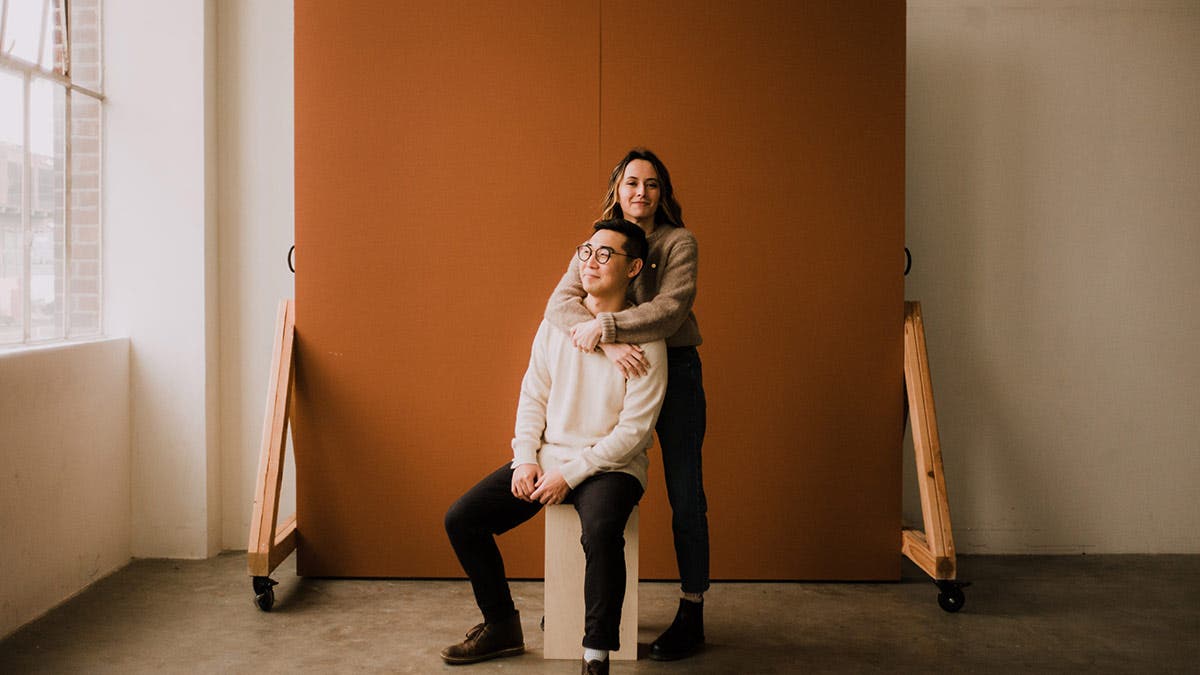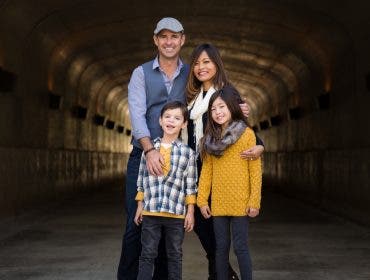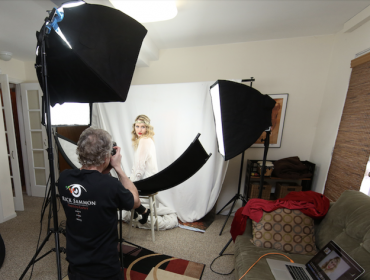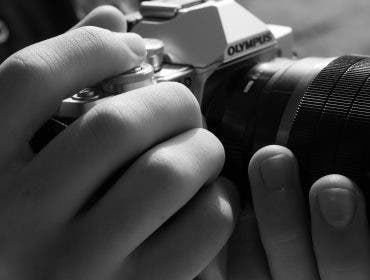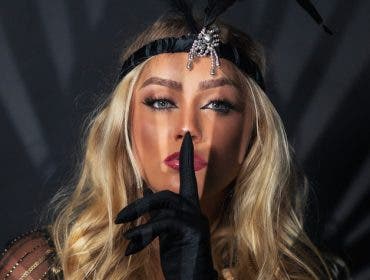Ready to take the plunge and set up your own photography studio? You’ll need to find the perfect space, purchase some lighting equipment, and of course, find the best camera to capture your subjects with. But what about the background? Each element of a photograph has the power to add to or detract from its overall appeal, which is why it’s important to pay close attention to every single detail that you include in the photo—even the studio backdrop. After all, what’s behind the subject is just as important as what’s in front of it.
Photography backdrops come in a wide variety of sizes, textures, and materials. They also range from simple solid colors to subtle patterns.
If you’re just starting out, your studio may be a spare room, a basement, or even the garage. If these rooms have multiple purposes, you’ll need flexible setups that are easily dismantled and stored away when not in use (see Joe Farace’s Portraits without a Studio). This limits your choices, but not by much.
If you have a dedicated space, anything goes, limited only by your budget and commitment.
Why Your Background or Studio Backdrop is Important
A background can make or break your image. Put your subject in front of a super busy scene and it takes the focus off of your subject – not to mention, it can sometimes create mergers. Your background should not have a bunch of distractions and should help focus attention on your subject.
Sometimes a background can add context to your image or it can lend emotion and feeling to a shot, as shown in the image above. As you can see, choosing the right background or backdrop for your subject can be just as important as choosing the right lens for the shot.
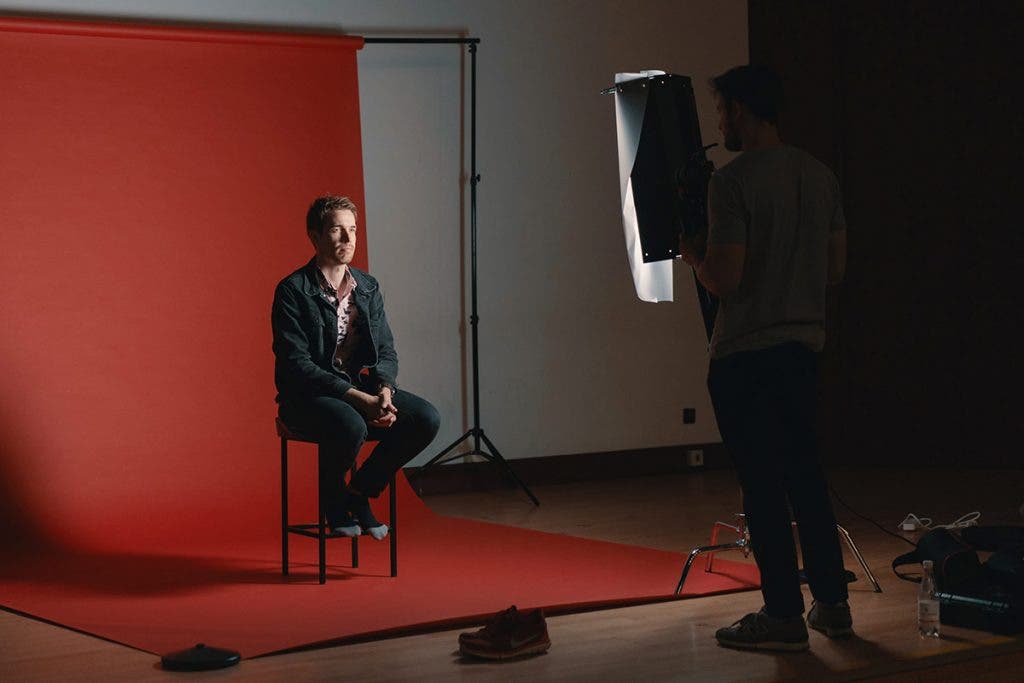
What are the Different Kinds of Studio Backdrops?
Photography backdrops are essential in photo shoots because they can set the mood of the image. Choosing and using the right photo background gives you an edge to easily communicate to the viewers, allowing them to digest the message that the photo is trying to convey.
To start with, here are the different kinds of materials and studio backdrops for photography:
Collapsible Disc
Location photographers have come to rely on photography backdrops that collapse down to flat discs due to convenience.
There is a wide choice of collapsible backgrounds that give you that studio look and feel, and most discs offer two color schemes and/or designs, one for each side. However, collapsible discs are limited to a relatively small range of sizes since a big surface is difficult to collapse.
Some foldable disc backdrops have skirts that extend in front of the backdrop on the floor, resulting in a seamless background for full-length subjects. Prices range from approximately $80.00 to around $165.00 for a 6×9 two-sided chroma key.
Collapsible backdrops are most commonly and successfully used for tightly-cropped headshots, and for portraits like business headshots and class photos in a school. For the best results, try to place your subject at least a few feet in front of the photoshoot background. This ensures you won’t create hard-edged shadows behind your subject with your lights.
Because their size is so limited, collapsible backdrops are often less practical for shoots with unpredictable subjects like young children and pets. Groups are also difficult to photograph in front of a collapsible backdrop. But when used appropriately, collapsible discs are among the most hassle-free background options available.
Our Top Picks
Lastolite Urban Collapsible Rusty Metal/Plaster Wall Background
While there are plenty of background discs with neutral designs, new collapsible backgrounds have funky distressed themes such as the Lastolite Urban Collapsible Rusty Metal/Plaster Wall Background. Savage has studio backgrounds with these designs as well. We recommend the Brown/Industrial Grunge and Red/Rustic Planks discs if you’re going for a more dramatic feel.
Chroma Key Background
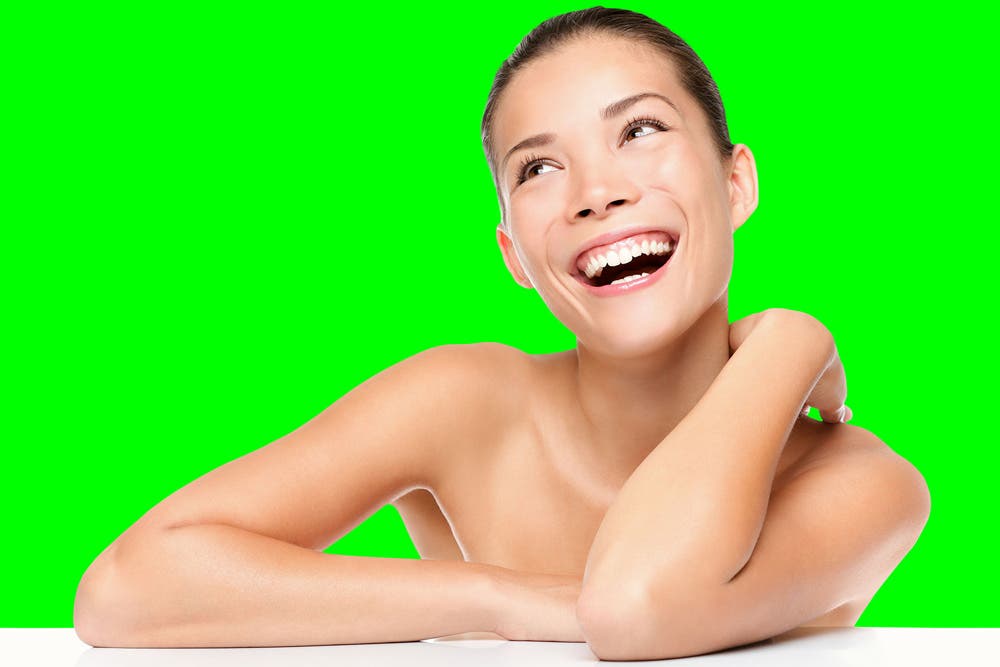
Chroma key backgrounds usually come in green or blue, similar to the green screens used in shooting movies. They allow the photographer to edit the photo and digitally insert details that the studio setup is lacking. Even though chroma key is widely used in films, it can also be used for indoor and outdoor photo shoots.
One of the advantages of using a chroma key background is that it can shorten production time by doing away with the need to change from one background to another. This kind of photo backdrop allows the photographer to freely take pictures without thinking of what background will best fit the image, as they can decide on that part later in the post-processing stage.
On the other hand, chroma key backgrounds are very demanding in the technical aspect. If you’re going to use this kind of backdrop, make sure that the subject is not wearing anything that’s the same color as the chroma, otherwise the computer will recognize the subject’s clothing as part of the background and create a hole in the subject’s body.
When using a chroma key backdrop, make sure you take all the necessary steps to make background replacement easier in post processing.
For instance, chroma key backdrops need to be evenly lit. Many photographers like to use a dedicated light fixture to create a wash of even lighting. Deliberately lighting the photography background also helps create separation between the subject and the backdrop.
While some chroma key backdrops come with background replacement software, you can also remove the green or blue screen fairly easily in Adobe Photoshop. Whichever photoshoot background removal system you choose, try to be consistent with your process and techniques to save time and frustration in your workflow.
Our Top Picks
Westcott X-Drop kit
If you’re planning to use a chroma backdrop, there are lots of manufacturers that offer this type of photography background for studios. Westcott’s X-Drop kit is one example: It features wrinkle-resistant cotton for fewer reflections in your images. The background is also easy to set up. Grommet holes on the fabric will help you mount it to an expandable frame that comes with the backdrop.
Belle Drape Collapsible Background Blue/Green Chroma
Location photographers who need chroma backgrounds have plenty of options, too. Belle Drape has collapsible chroma backdrops for outdoor shoots. Give their Portable 5’x6’ and 40×60” Chroma Key backgrounds a try if you’re working outside the studio.
Fabric Backgrounds
Fabric backdrops are among the most common photography backgrounds. They’re available in a variety of materials like canvas, muslin, polyester, stretch knit, and velour. Some fabrics are intended to be stretched on a frame. Others are made to drape across any studio backdrop stand.
Selecting the right kind of fabric backdrop for your shoot often comes down to practicality. For example, if you need a portable kit that you can easily pack, transport, and set up, you’ll want to avoid fabrics likely to crease or wrinkle.
Each type of photography backdrop has its own strengths and weaknesses to consider. Here are a few key points to keep in mind.
Canvas
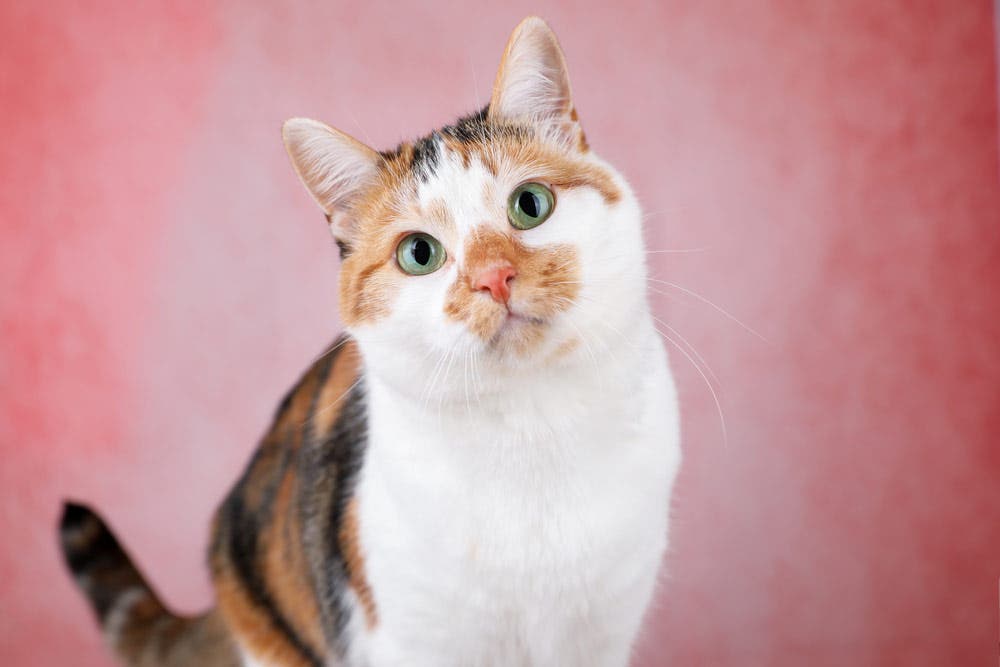
Made of moderately thick, heavy material, canvas used to be the most popular among photography backdrops. However, due to its bulk and cost, it has been overshadowed by muslin backdrops in terms of popularity. Nevertheless, a good canvas backdrop will last a long time and provide a classy look to your shots. While you can bring canvas photo backdrops with you, they’re best suited for studio work since they easily wrinkle when stored in a duffel bag.
Some canvas backdrops include subtle patterns that provide an interesting but neutral background that doesn’t compete with a portrait subject for attention. Darker backgrounds can be used for low-key lighting, while a lighter, well-lit photo background can create a completely different high-key mood. Canvas studio backdrops at Adorama range in price from around $135.00 for a 5×7 to $270.00 for an 8×8-foot cloth.
Pros:
- Endless variety of colors and designs
- Easy to fold up and store
- Excellent creative opportunities
Cons:
- Heavy
- Expensive
Cotton
Cotton is a great photo background because it works well with the subject, especially if the lighting is properly set up. Also, if you want a studio backdrop that’s perfect for traveling, invest in a cotton fabric backdrop. It’s portable and easy to transport, set up, and collapse. It varies in size, too, so make sure to pick the right one before going to your location.
Our Top Picks
Westcott Cotton Background, High-Key White
Many brands produce cotton backdrops for professional photo studios, leaving you with a variety of choices. Westcott is one popular brand among pro photographers. Their wrinkle-resistant cotton backgrounds are great for shooting high-key images. You can also take them to any location and set them up quickly since they’re lightweight and sturdy. This 9×20-foot white backdrop is not only portable; it’s anti-reflective, too.
Muslin
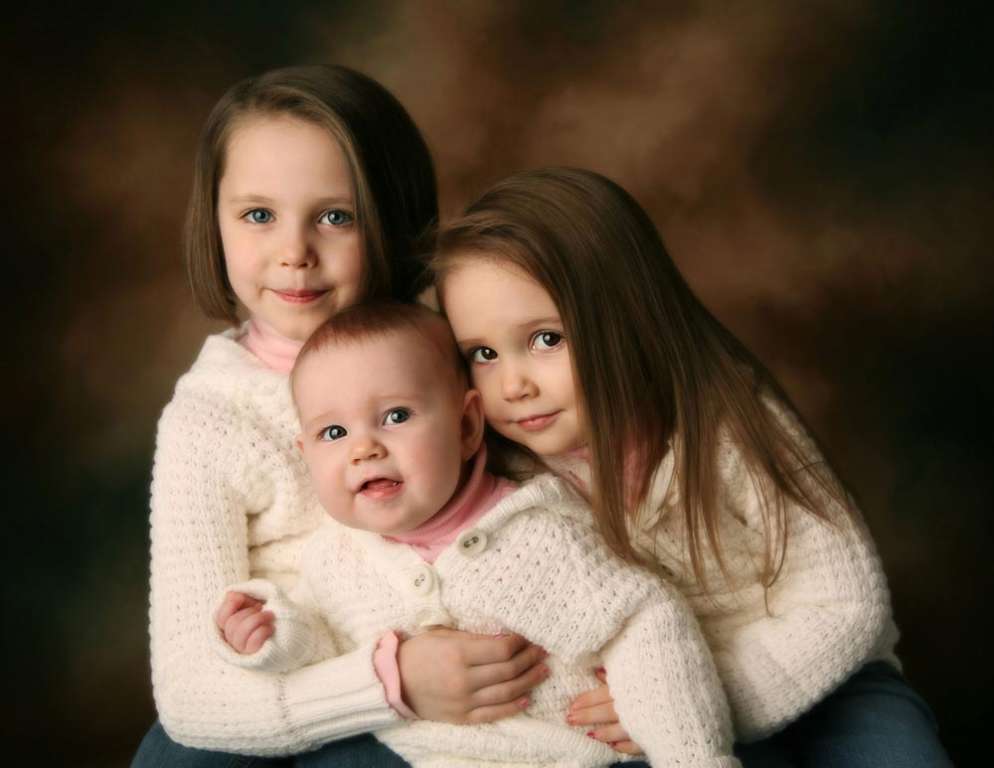
Muslin is a popular portrait background material as it is lightweight, relatively low cost, and highly versatile. For portrait photographers, muslin backdrops are essential for studio work.
One of the best backdrops for photography purposes, muslin is a lightweight material that can be used as a solid-looking background when hung flat or can be draped over surfaces to transform the look of a picture. Because of the fabric characteristics, its folds (when draped over objects) can be very appealing.
It is also considerably thinner and lighter than canvas and doesn’t wrinkle as easily. By manipulating how it hangs and using directional background lighting techniques, you can use muslin either as a neutral background or a very dramatic one.
Muslin comes in an amazing variety of sizes and patterns. (In fact, there are over 1,000 different muslin backdrops available at Adorama!) Sizes range from 5×8 to 30×30 feet, with prices ranging from around $20.00 for a simple 5×8-foot solid color backdrop to around $2,400.00 for a 10×30 designer series patterned design.
Many larger muslin backdrops, because they are low-demand items, are made when ordered and shipped directly from the manufacturer. Since this can take up to five weeks, plan such orders carefully and well in advance of any anticipated need.
Pros:
- Versatile – it can be dyed different colors
- Can be shaped or draped on anything
- Light-weight
- Can be washed
Cons:
- Unless you are looking for a crinkled look, muslin wrinkles easily
- Requires a steam iron
Our Top Picks
Belle Drape Scenic Series, Hearts Painted Muslin Background
Lively images call for muslin photo studio backdrops with bold patterns. These backgrounds will bring out the fun and nostalgia into your photos. Our top picks include Belle Drape’s 10×12-foot Scenic Series Style 920 backdrop, which features a heart pattern. We even have crushed backdrops such as Savage’s Blue Winter background.
Savage Solid Muslin Background, Black
But if patterns aren’t your thing, Savage’s 10×12-foot solid muslin background in black is just what your studio needs. It also suits location photography, making it a versatile backdrop. You won’t have a hard time cleaning this background since you can clean it with your washing machine.
Polyester
Like other photo studio backdrop materials, polyester also comes in various sizes and colors. An advantage of this fabric is that it’s wrinkle-free. If there are heavy wrinkles, it can easily be removed by warm ironing from the back or by steam ironing it when it’s hung. It also includes rod holes that are perfect for hanging, especially if you don’t have a place to store it after use.
Our Top Picks
Westcott 8×13′ X-Drop Pro Wrinkle-Resistant Backdrop
Our polyester studio backdrops are available in solid colors. Some brands have these basic backgrounds, such as these Westcott backdrops. It is also offered in pastel blue, blush pink, brown sugar, and other hues.
Stretch Knit
With stretch knit fabric as your photo backdrop, you won’t have to worry about wrinkles. You just have to stretch it, and those creases will simply straighten out and you can proceed with your photo shoot.
This kind of fabric is also easy to wash, as it can be cleaned using a washing machine. Its flexibility can provide a variety of looks, depending on your desired setup.
Out Top Picks
Lastolite 10×24′ Knitted Background, Maine
Lastolite backdrops are a flexible option for portable photoshoot background setups. Their stretch knit material is easy to work with and you can drape it on a single bar or stretch it across a more elaborate studio backdrop stand. Their 10×24’ size is perfect for full-body photography and sessions with groups.
Velour
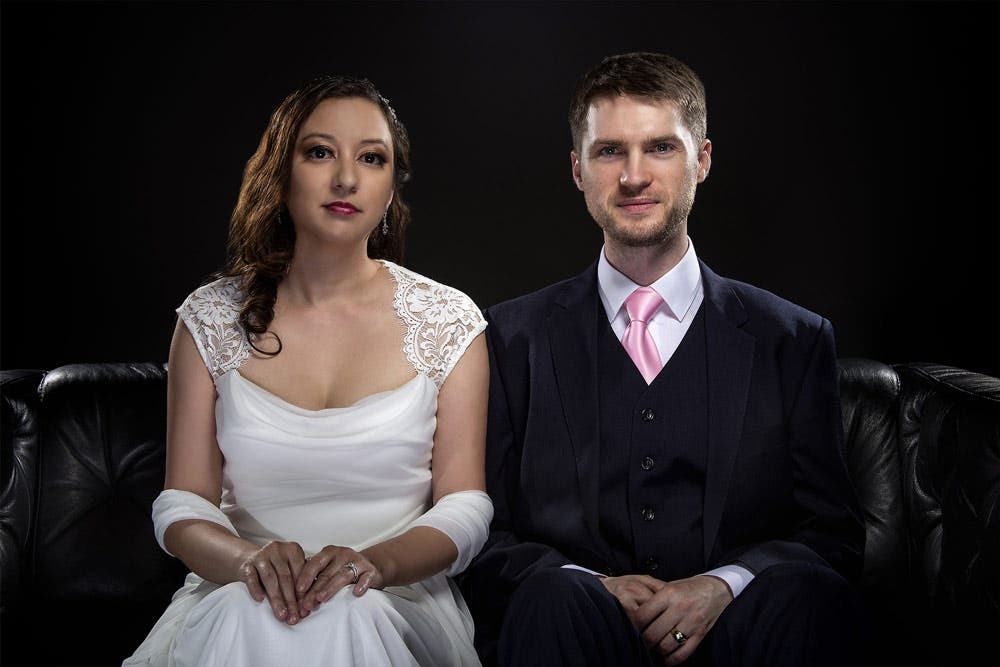
Velour is a type of woven fabric that is perfect to use as theater curtains and stage draping. Just like other types of backdrops, it also varies in size, color, and weight, depending on its purpose.
This kind of fabric has an amazing quality that absorbs light from flashes around the studio. It enables you to have a pitch-black (if using black velour) portrait background that will not reflect the light from your flash or lighting equipment. This way, you don’t have to worry about the direction of light affecting the background because it leaves no detail.
Since this fabric is similar to velvet, it can attract dust (and hair) over time, but what’s great about it is that it’s not too hard to clean. Just dust it off and maybe use some sticky tape (for specific parts) to make it look brand new again.
Our Top Picks
Photek 10×12′ Screen Background, White
For those who want to try shooting with a velour backdrop, this white screen background from Photek will do the trick. A four-inch pocket lets you use the backdrop on crossbar supports, so you can easily attach it without using clips. The background will also stay in place, thanks to metal grommets along its sides.
Floor Drops
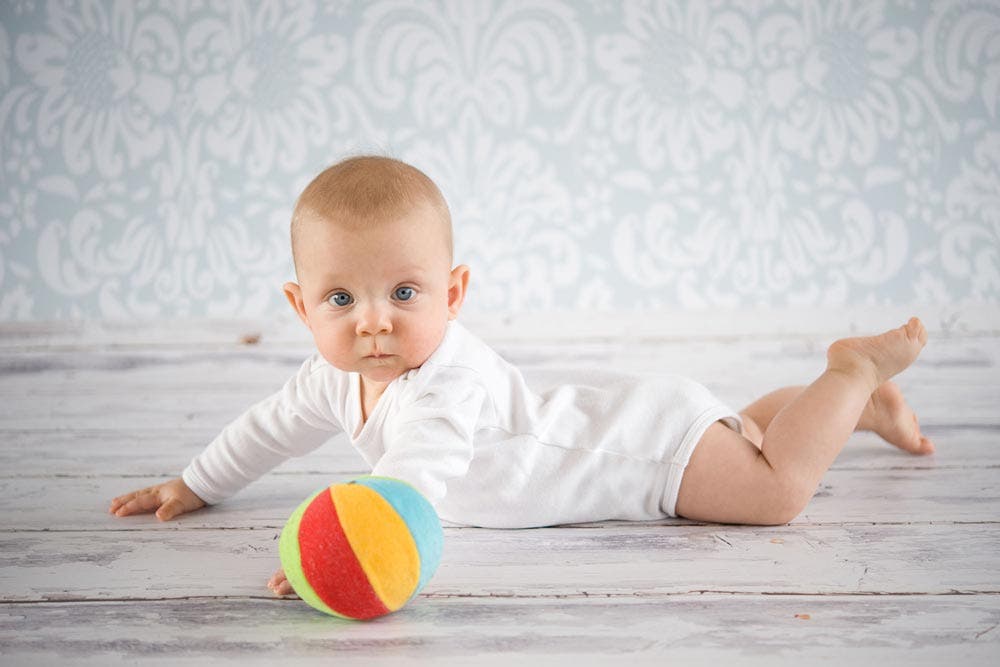
Sometimes, the floor is just as important as the backdrop. A relatively new item is the floor drop—a somewhat thick surface printed with a typical floor cover. This design makes the floor look realistic in a photograph.
With a wide range of patterns, these items can complement your current photo studio backgrounds. You can have your subject stand on a hardwood floor, cobblestones, or a sports field by simply swapping out the floor drop. Or, you can hang the floor drop and use it as one of your backgrounds.
Floor drops are an especially important consideration for shoots where the floor will figure prominently in your images. Because babies, toddlers, families, and pets are often photographed seated on the floor, you’ll want to create an attractive surface for your photos.
Most floor drops are made of a thick material, so they’ll stand up to repeated use without becoming damaged. Still, it’s wise to place padding or felt cushions under chair legs or other props. That way, you won’t dent or wear out areas of your floor drop prematurely. After each shoot, wipe down your floor drop with wet wipe or soft cloth.
Pros:
- Can add an edgy feel to images
- Wide variety of designs
Cons:
- Depending on size, can be a little heavier than other options
Our Top Picks
Savage 8×8′ Floor Drop, Whitewash
Savage is a reliable photoshoot background maker that supplies a great range of products. Their floor drops are durable, large enough to work in a variety of scenarios, and photograph beautifully. Their new 8×8’ Whitewash floor drop has a classic distressed wood look that’s perfect for all varieties of portrait sessions.
Seamless Paper
Seamless background paper comes in rolls, with typical widths of 26, 53, 107, and 140 inches (though some wide widths are available). Rolls are usually 12, 35, or 50 yards long. It is generally available in solid colors, and prices range from around $15.00 for short 26-inch rolls to around $190.00 for 107-inch x 50-yard wide rolls.
The most popular color for seamless paper is white—no surprise—and the most popular width is 107 inches (a 12-yard roll of 107-inch-wide paper costs around $35.00). This paper is mostly used as a portrait background, as well as for product or still life photography in smaller sizes.
Most studio photographers keep several different rolls of seamless white paper available because it’s so flexible (you can cut it to fit) and inexpensive. Prices range from only $15.00 for a 26-inch x 12-yard roll to $190.00 for a 140-inch x 34-yard roll.
One thing to remember is that though this type of photo background is durable, it must be handled with care, especially while setting up. Don’t forget that seamless paper backgrounds are still made up of paper and can get ripped or torn from excessive force.
Another problem with seamless paper backgrounds is that they are not very portable. Since you buy them in rolls, they are not the easiest backdrops to carry with you for outdoor photo shoots. Also, they can easily get wet, dirty, or punctured by sharp objects, such as the heels of your model’s shoes.
Overall, seamless paper is a great backdrop for emerging studio photographers to start with. Get a roll or two of this kind of background, and start with white and/or gray. You can build your collection from there as assignments warrant specific colors.
Seamless paper backgrounds are best stored by carefully and tightly rolling them on a studio backdrop stand. Many backdrop stand systems will accommodate multiple colors of seamless paper so you can easily switch between colors during a shoot.
If you need to store your paper background separately from your background stand, try to store it vertically so the paper doesn’t crease.
When setting up for each shoot, examine your paper backgrounds for creases, marks, dents, and rips. It’s much easier to cut off the damaged portion and start with a fresh surface than it is to photoshop background flaws.
Pros:
- A multitude of colors to choose from
- Is a straight color/shade of background
- Crisp and clean
- Great for commercial images
- Perfect for full length images
Cons:
- Cannot be cleaned and reused which means it can be costly since you have to discard the seamless paper used on the floor with each use
- Can require a good deal of room in your space width-wise since rolls come in 53” or 9 feet widths, length-wise as to keep the seamless “seamless” your subject has to step forward and height-wise to keep the top of the seamless from showing in your images your papers need to rest up high
- Rolls are heavy and require sturdy background support system
Our Top Picks
Savage Widetone Seamless Background Paper, White
One popular choice for this type of photography studio backdrop is Savage’s Widetone line. Hailed as the best seamless paper for pros, it’s both versatile and inexpensive. Widetone products provide portraits, product shots, videos, and more with a flat backdrop. They’re also essential items for plays, events, and other uses.
Savage currently offers Widetone backgrounds in 65 colors. But if you’re a studio photography newbie, you might want to use this 26×36-foot basic white backdrop first. The brand also carries five sizes for Widetone backdrops.
Vinyl Backgrounds
When you want to feature photography backdrops that add scenes or complex textures, vinyl backdrops are the way to go. Because they’re relatively heavy and rigid, you rarely need to worry about creases or wrinkles. You can hang your vinyl backdrop on a backdrop stand, unroll it to the desired size and configuration, and you’re ready to go.
To prolong the life of vinyl backdrops, make sure to wipe them off after each use. Grit from your subjects’ shoes can scratch the backdrops. Never roll a vinyl backdrop for storage with any debris caught inside.
Pros:
- Matte finish
- Doesn’t reflect a flash
- Consistent look and feel when reusing
Cons:
- Heavy
- Can be hard to find a storage/travel solution unless you get creative
Savage No-Glare Matte Finish Photo Gray Infinity Series Vinyl Background
Vinyl backdrops are thick, rolled and durable, and are recommended for professional studio work. They generally come in solids, but there are a few with printed patterns that can be very inexpensive. While most vinyl backgrounds have a glossy sheen, there are some (including a line by Savage, which includes the Savage Matte Finish Gray Infinity Series vinyl background) that have a matte finish to eliminate glare and reflections.
The biggest advantage of vinyl backgrounds is that they are washable (usually with a damp sponge) and reusable, resulting in less waste. Rolls are typically rolled up for storage to prevent wrinkles or tears and are hung from background poles.
Our Top Picks
Westcott X-Drop 5×7′ Light Mocha Wood Plank Backdrop
Aside from Savage’s Infinity line of vinyl backdrops, we also stock vinyl backgrounds from brands such as Westcott, Flotone, and Lastolite. Westcott’s X-Drop vinyl backdrops add a unique touch to your images with their designs. The brand has backgrounds in light mocha, mist distressed wood, nutmeg pastel, and other color variants.
Flotone Vinyl Graduated Background, Grey to White
Flotone also produces vinyl backdrops for photo and video studios. Their graduated backgrounds help create unique lighting effects instantly. You also have a variety of color options for these backdrops, including grey to white, ultramarine, and black to red.
Lastolite 9’x19’6″ Vinyl Backgrounds Roll, Black
Lastolite’s vinyl backdrops will suit studio set-ups as well, especially since they’re reusable. It’ll only take a quick wipe to clean these items after a session. You can get a super white or a black backdrop for your studio.
Studio Backdrop Supports
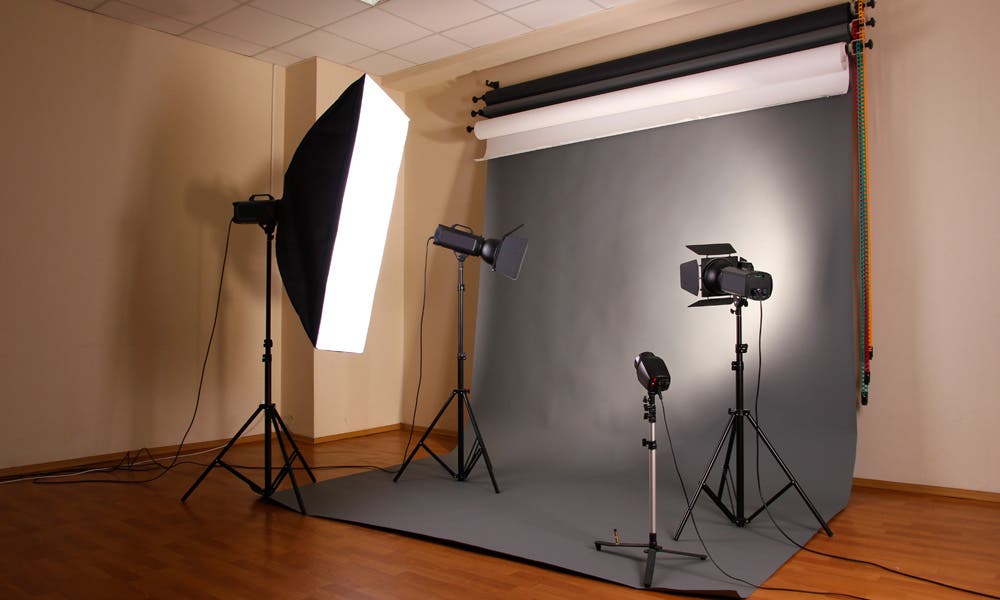
As with lighting systems and camera equipment, backdrops require some kind of support to keep them in place. Background supports can be simple or sophisticated systems. The simple ones are easy to set up and break down and are well suited for location work, while sophisticated, permanent studio systems can hold multiple backgrounds that can be raised or lowered either manually or at the flip of a switch.
Some photographers get the lightweight systems so they can bring them on location shoots, but they also use them in their studios with sandbags at the base to keep the supports stable. A sophisticated studio support system can cost thousands of dollars, but a portable system shouldn’t set you back more than $100.00 to $250.00.
It’s important to remember that your studio backdrop stand is the foundation for your shoot. While you may be tempted to select a low-cost option, it’s better to invest in a background system that will withstand the weight of a heavy backdrop. It also helps to prevent accidents or issues during your shoot.
Each time you use your studio backdrop stands, inspect them and tighten any connection points that feel loose or unstable. As long as you take good care of your gear, it should last for several years of heavy use.
Our Top Picks
Manfrotto Black Free Standing Background Support System, with Crossbar & Stands
Studio photography newbies and pros will find plenty of good backdrop stands and supports on the market today. Manfrotto’s Free Standing Background Support System is a top choice for on-the-go photographers due to its portable form. It’s also lightweight at 4.2kg, so you can stash it in your gear bag. This studio backdrop kit can hold up to 10kgs of paper and fabric backgrounds, too.
Savage Port-A-Stand, Free Standing Background Support System
And while we’re talking about free-standing backdrop kits, Savage also offers one in their Port-A-Stand Background Support System. A collapsible design lets you carry the kit wherever you go, which benefits studio and location shoots. It also holds nine-inch seamless paper and heavier fabric backdrops. But if you don’t have any of these backgrounds yet, don’t fret: This backdrop kit comes with Savage’s 53×36-foot seamless paper in white.
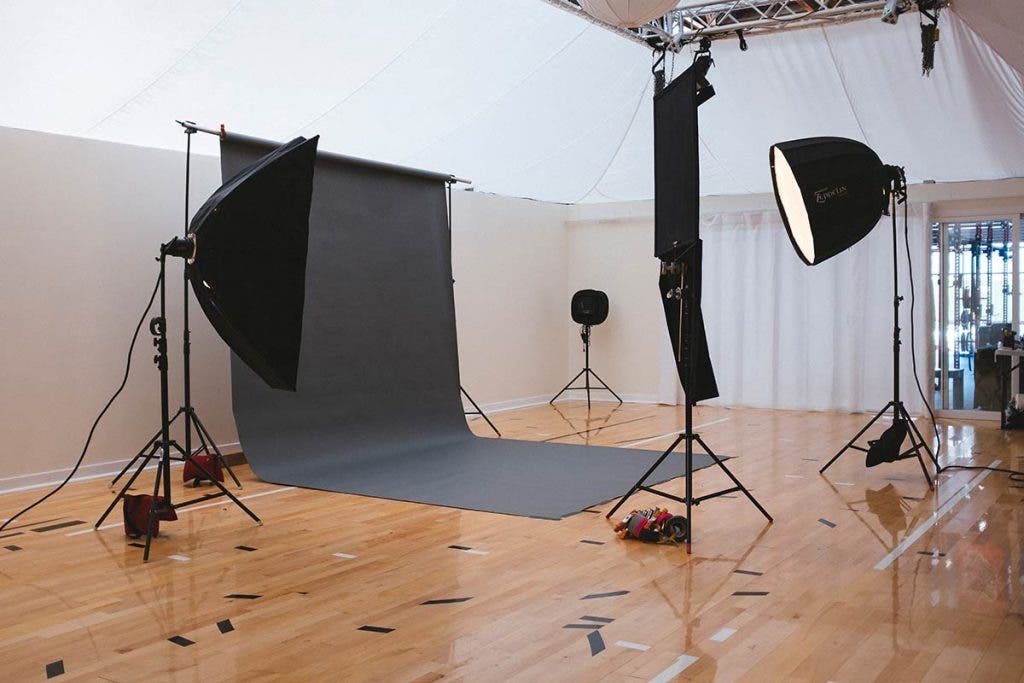
How to choose the best studio backdrop for your project
A studio backdrop is one of the most important elements to consider for any shoot. But what should you look for in a studio backdrop? Here are some of the key features to consider:
Color
First and foremost, think about the colors that you’ll incorporate in your shoot. If you’re photographing a red product, you may want a milder background color, such as a neutral white, black, or grey to help the item pop. At the same time, don’t let this hold you back. Play around with colors to see what looks best; you can always pick up a cheap poster board or two from an office supply store to experiment with hues before investing in the full backdrop.
It’s important that your background does not overwhelm your subject so be careful with the colors that you choose. Crazy bold colors with patterns might work well for rockstar photo shoots, but you probably wouldn’t shoot your grandmother in front of one of those background colors/designs.
Colors should also be complementary to your subject’s features and their wardrobe so that you don’t lose your subject in a “same color” scheme. As mentioned previously, colors can also help effectuate a feeling or emotion for the subject in the image. (i.e. a black background can dispel a mood of mystery and darkness while white can instill purity and goodness.)
As you put together your photo shoot, don’t forget that background as it can make or break your image. Your background is a very important piece of your photo shoot puzzle, something that it will never be without – so it’s important not only to choose creatively, but to choose wisely so that the focus stays on your subject and not the background.
Image vision
Next, think about your goal for the image or series of images. What do you want it to look like, and what kind of aesthetic would help bring that vision to life? With that in mind, browse through backdrops to get an idea of what’s out there and what kind of accessories could help you create your photo vision.
Texture
Another important element is texture. Smooth backdrops are great, and are often the most versatile, but if you want to blur the background, you’re going to want a texture background like brick or wood. A smooth, solid background doesn’t blur as well.
Props
Now, go beyond thinking solely about the product or subject you’re photographing. What other elements could work in tandem with the backdrop to help your image shine? For example, if you’re photographing a new coffee maker, could you add a small mug, or a sprinkle of coffee beans with a spoon to set the scene even better? Or, if you’re taking baby or pet photos, could you make the set a bit more fun and authentic by adding a toy or soft blanket to make the images look like they’re at home? Don’t overdo it with props, but adding a few can help your image look realistic and compelling.
Lighting
Lastly, don’t forget lighting. The best backdrop in the world will photograph poorly if it’s not well lit. Study how your backdrop handles light before purchasing it, and make sure that plays into your vision (e.g., is it reflective? Or more matte? The former may cause weird light beams to show up in the photos, while a more matte material light muslin will not).
